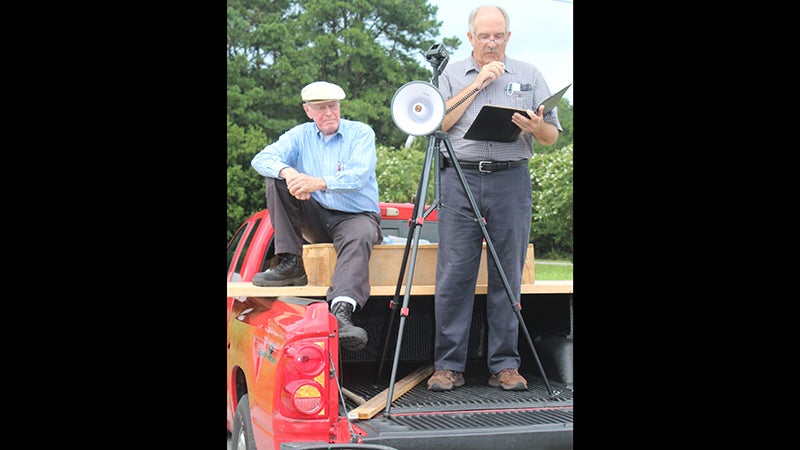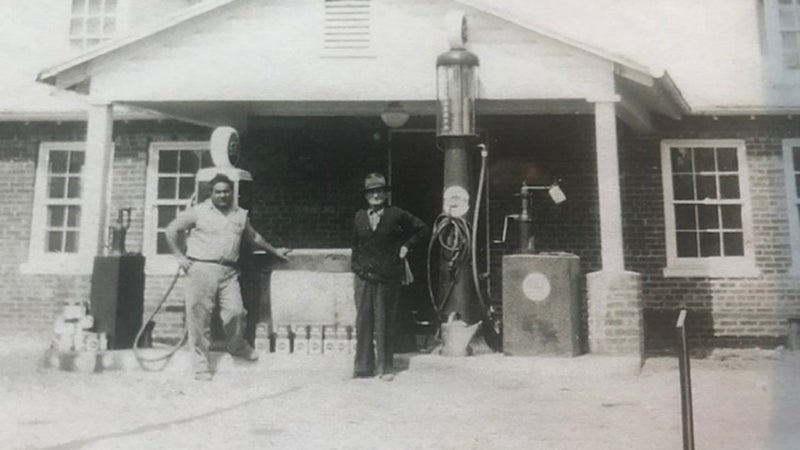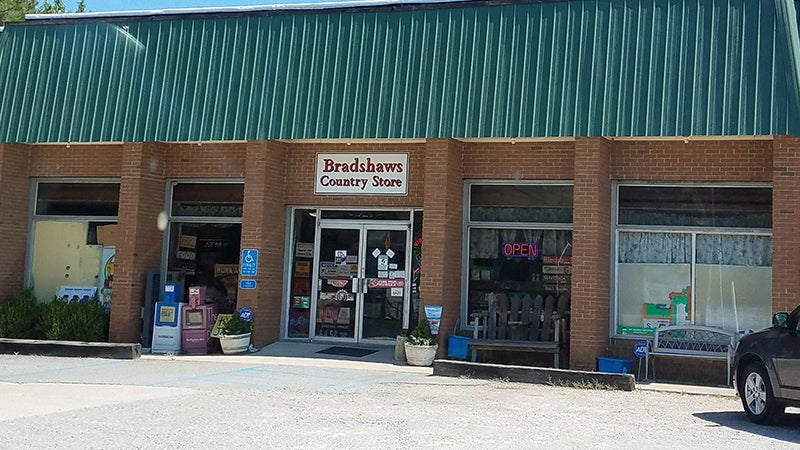‘If you like country, this is the place’
Published 8:02 pm Friday, March 31, 2023
|
Getting your Trinity Audio player ready...
|
Village might have been named for brothers
Traveling toward Suffolk on Carrsville Highway through the southern tip of Isle of Wight County, motorists will pass several farm fields before coming to a wooden sign welcoming them to the unincorporated village for which the road is named.
The village itself, as one might expect, owes its name to someone named Carr — though there’s some disagreement as to whether this was Nathan or his brother, Jesse. According to “Historical Notes on Isle of Wight County” by Helen Haverty King, Nathan was the village postmaster in 1836, around the same time the Portsmouth and Roanoke railroad passed through that part of the county. In 1965, however, 77-year-old Rosa Carson Carr wrote a short history of the village, in which she claimed Carrsville was named for Jesse, who had reportedly fathered 21 children.
The name “Carrsville” first appeared in the county’s tax book for 1846, by which time “there were plenty of Carrs around, so the place was aptly named,” King concluded.
The job of postmaster later passed to several members of the Rawls family, according to King. Among them was Dr. Gavin Rawls, a physician. He served as postmaster from 1878-1879 and in 1886, was appointed the third superintendent of Isle of Wight County’s public school system, a position he held for the next 36 years.
“I have an old desk with a date 1886 that was used by Mr. Duke in the old Carrsville railroad depot,” said Volpe Boykin, a lifelong resident of the village.
Boykin is 63 years old, but has only had access to indoor plumbing for 46 of those years. Growing up in the area during the 1960s and ’70s, he can recall having to use an outhouse for the first 17 years of his life and sleeping beneath eight inches of blankets each winter — as his childhood home had no heat save for a coal-burning potbelly stove.
Some days, it would get so cold that ice would begin to form inside his goldfish bowl. To keep the fish from freezing, his grandmother would place the bowl on the stove each morning to thaw it out. One morning, he remembered, she had left the bowl on the stove while bringing his grandfather breakfast at his store, and then got distracted chatting with someone there — resulting in the untimely demise of Boykin’s childhood pet.
During this time, small country stores like his grandfather’s abounded in southern Isle of Wight County, with every unincorporated village — including Carrsville — having at least one. As there was only one grocery store, seven miles away in Franklin, these mom-and-pop shops were where most Carrsville residents, many of whom where farmers, purchased their day-to-day needs. Transactions were often made on credit, with residents settling their debts after pay day or in exchange for meat they raised or crops they grew.
“Stores were social gathering places,” Boykin said. “Everybody in that little neighborhood, almost every night, they’d be gathered in the stores. Some of them would be playing music. Some of them would be playing checkers.”
Lori Boone Lawrence, another nearly lifelong resident of Carrsville, is nine years younger than Boykin but also recalls the presence of these country stores. Her great-grandfather, in fact, was one of the first African-Americans to own a store in Carrsville. While the store has long since closed, the building itself still stands.
“There was a pool table and a juke box,” Lawrence said. “Some of the older members of the community would go there to shoot pool and listen to music.”
“I remember when the big deal was the drive-in movie theater in Carrsville,” Boykin said.
This, according to Isle of Wight County Museum Director Jennifer England, opened in 1951 and closed sometime during the 1970s. It was capable of hosting 200 cars.
But aside from that and a youth softball league for which Lawrence played, there wasn’t a lot for the youth of Carrsville to do, she recalled.
“We still don’t have a lot of outlets for things to do,” Lawrence said. “My son wants to relocate for that reason, not a lot of opportunities for young people. But if you like country, easy living, this is the place.”
Not every teen and 20-something wants to leave, though. In fact, Maddie Schimizzi and her fiance’, a firefighter with the Carrsville Volunteer Fire Department, just bought a house in the area in July.
The VFD was born in 1957. According to a history written by Carrollton resident Albert Burckard for its 50th anniversary, charter members Walter Johnson, Archer Spivey, J.C. Rose and Elliot Johnson had driven to Alabama to pick up a Navy surplus 1941 International fire engine with four flat tires at a cost of $210 ($1,958.59 in 2020 dollars). The charter members then worked every Saturday at Spivey’s shop on the truck until it was restored, repainted and equipped. George “Big Boy” Carr’s shop became Carrsville’s first firehouse, with the department relocating to its current station in 1988.
Carrsville is also home to a school, Carrsville Elementary, which also factored into Schimizzi’s decision to move there. Built in the 1970s, it was expanded in the 1990s and renovated again in 2018 to include a music room, coinciding with the debut of a program to give all students in grades K-5 20 minutes of violin instruction every day. The school’s gymnasium, however, predates the school by several decades.
“My mother played basketball in there,” Boykin said.
Jackie Carr, who represents the Carrsville District on Isle of Wight’s School Board, was principal of Carrsville Elementary for seven years, starting in the fall of 2005.
“I can remember my first trip in the school vault; I found framed pictures of past graduating classes and one of the classmates in one picture was my father-in-law, Charlie Eugene Carr,” she said.










